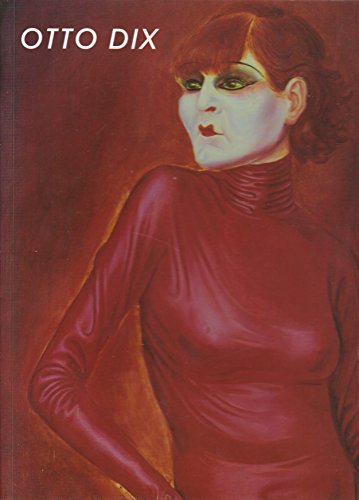Otto Dix
1891-1969
Keith Hartley; Sarah O'Brien Twohig
BOOK REVIEW

The art world is often viewed through a lens tinted by admiration and reverence, yet few artists evoke the stark, visceral impact of Otto Dix. If you haven't yet ventured into the enthralling universe presented in Otto Dix: 1891-1969, crafted by Keith Hartley and Sarah O'Brien Twohig, you are standing at the precipice of an eye-opening journey. This work is not merely a collection of paintings and sketches; it is a fierce confrontation with human nature, war, and survival, all wrapped in the vibrant colors of German Expressionism.
Dix dares us to look deeper into the abyss-his art is a bold narrative of the human condition, intricately woven with the threads of his tumultuous life. Born in the shadow of a rapidly changing Germany, Dix's experiences as a soldier in World War I saturated his canvas with a haunting realism that challenges the viewers' perceptions. The grotesque yet captivating portraits serve as a testament to the horrors of war, evoking emotions of empathy and distress, while also hinting at the resilience of the human spirit.
What sets this book apart is not just the examination of individual pieces but also the contextual symphony that accompanies each stroke of Dix's brush. Hartley and Twohig expertly link the artist's vibrant biographical elements to the tumult of his era-the Weimar Republic, the rise of fascism, and the social upheaval that marked his lifetime. As you navigate through the pages, you are not just observing art; you are living through the tumultuous tides of early 20th-century history.
Critics have often termed Dix as a "horror painter," summoning a visceral reaction to his depictions of disfigurement, decay, and desolation. Yet, this assessment barely scratches the surface. Readers often express a mixture of fascination and revulsion, as Dix's art magnifies the contradictions of existence-beauty intertwined with brutality. Comments on forums run the gamut from reverent admiration to deep discomfort, revealing the polarizing effect of his work. Some argue that his stark realism is essential for understanding the human psyche during distressing times, while others find it too confrontational.
But what is criticism if not a reflection of one's own fears and biases? Dix's work compels us to confront our discomfort. He unearths truths that lie beneath the façade of civility-pieces like his infamous War Cripples illuminate the moral decay and aftermath of conflict, often leaving viewers grappling with their emotions long after they've stepped away from the canvas.
Dix influenced a multitude of artists and movements that followed, particularly in how art mirrors societal woes. From Francis Bacon to the contemporary visual narratives we see today, his haunting style and daring subject matter beckon artists to explore the darker sides of existence. By challenging us to engage with our discomfort, Dix ensures his legacy remains eternally relevant, forcing us to acknowledge the truths we may wish to ignore.
Within Otto Dix: 1891-1969, Hartley and Twohig lay bare not just the artist's works, but the man himself-his vulnerabilities, his triumphs, and the societal upheaval that shaped him. Opening this book is akin to stepping into a time capsule; each page unravels complex stories wrapped in color and pain, joy and sadness.
Graduate yourself from the mundane; let your mind dance on Dix's canvas of reality. Allow the emotions to swell, the reflections to provoke discomfort, and the beauty of his genius to sink into your consciousness. This is not simply a book to read; it is an experience to cherish, one that serves as a mirror reflecting not just the art world, but society at large. If you dare to look closely, you may just find yourself entwined in the very fabric of what it means to be human-flawed, complicated, yet undeniably beautiful.
📖 Otto Dix: 1891-1969
✍ by Keith Hartley; Sarah O'Brien Twohig
🧾 230 pages
1992
#otto #dix #1891 #1969 #keith #hartley #KeithHartley #sarah #obrien #twohig #SarahOBrienTwohig